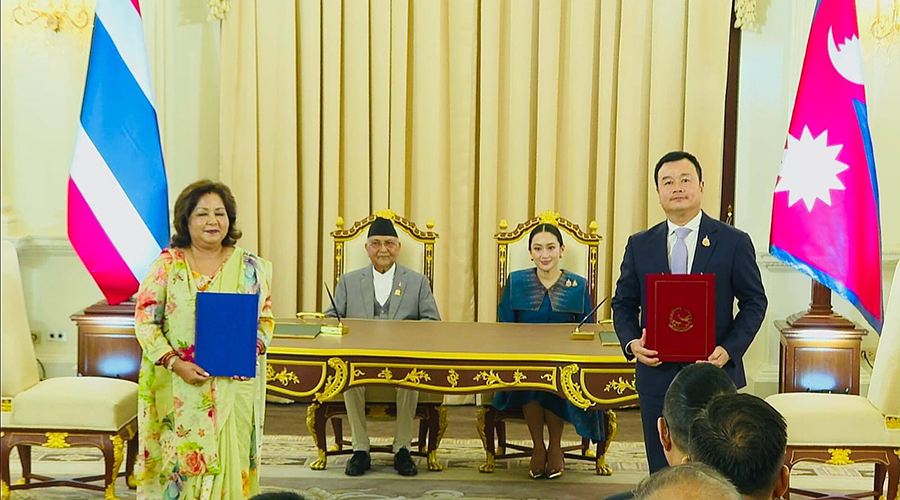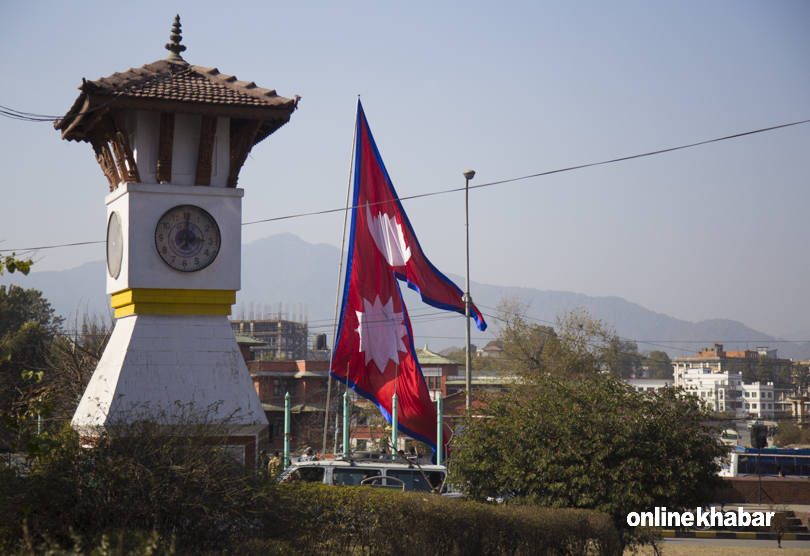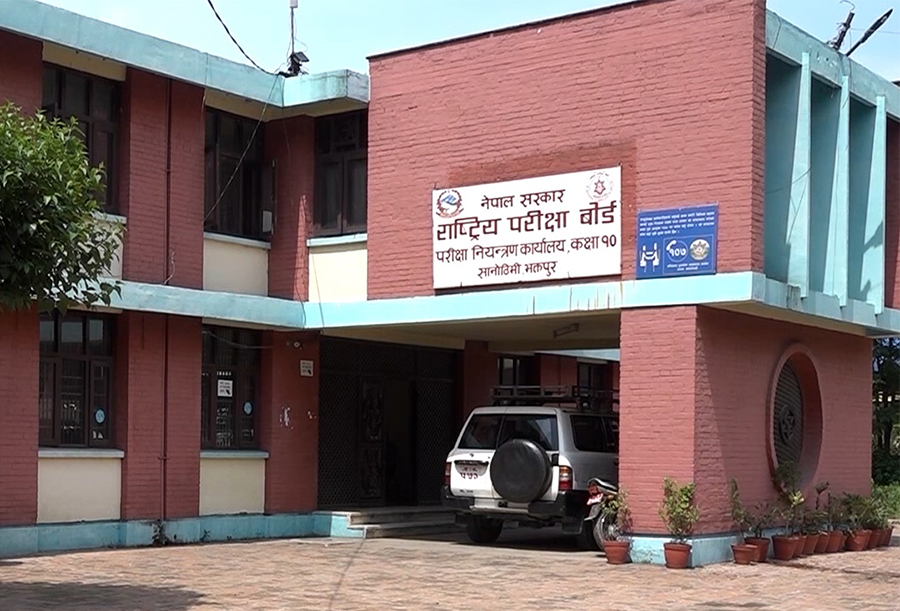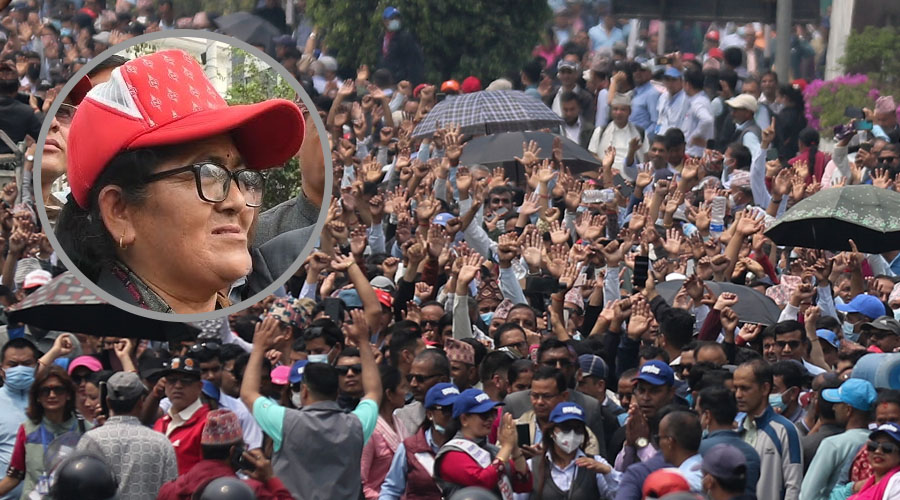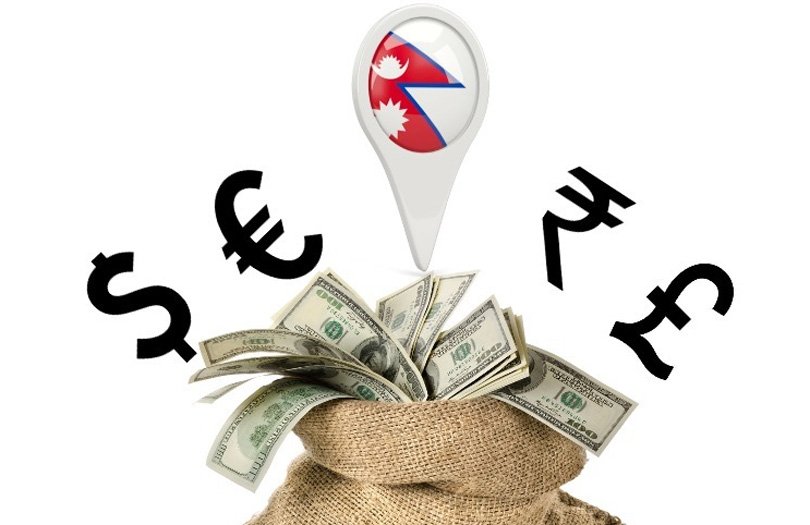
Nepal has long relied on foreign assistance to support its development efforts. Over the past decade, the nature and dynamics of foreign aid to Nepal have evolved significantly, reflecting changing global aid paradigms as well as Nepal’s own development priorities and challenges.
It’s high time to examine aspects of foreign assistance to Nepal from 2010/11 to 2023/24 such as aid volumes, types of development partners, sectoral allocations, and alignment with national priorities.
Also it is time to explore challenges in aid utilisation and opportunities to enhance aid effectiveness going forward, particularly as Nepal seeks stakeholder feedback to revise its development cooperation policy.
Aid volumes and disbursement trends
Foreign aid has remained an important source of development finance for Nepal, though its relative share in the national budget has declined over time. In fiscal year 2010/11, foreign aid commitments totaled $1.08 billion, representing about 26 per cent of the national budget. By 2019/20, aid commitments had increased to $2 billion, but this accounted for only about 20 per cent of the budget.
The trend of declining relative share continues, as evidenced by the most recent data available for fiscal year 2024/25. Nepal’s government has set a target of receiving approximately $2.05 billion in foreign assistance, comprising $397 million in grants and $1.65 billion in loans. This foreign aid commitment represents about 14.5 per cent of Nepal’s total budget of $14.1 billion for the fiscal year 2024/25.
This decline in the relative share of foreign aid in Nepal’s national budget is partly due to the government’s efforts to increase domestic revenue mobilisation and reduce dependence on external assistance. However, it’s important to note that while the percentage share has decreased, the absolute value of foreign aid commitments has generally increased over the years, reflecting Nepal’s ongoing need for external support in its development efforts. This trend underscores Nepal’s gradual progress towards greater financial self-reliance while still recognising the importance of international assistance in its development journey.
A persistent challenge has been the gap between aid commitments and actual disbursements. From 2010/11 to 2019/20, actual disbursements averaged only about 70 per cent of commitments. For instance, in 2018/19, while commitments totaled $2.2 billion, actual disbursements were only $1.6 billion. This disbursement gap has been attributed to factors like delays in project implementation, cumbersome bureaucratic processes, and changing priorities of both donors and the government.
The COVID-19 pandemic disrupted aid flows in 2020/21, with disbursements declining to $1.37 billion. However, aid commitments and disbursements have since rebounded. In 2021/22, aid commitments reached $2.46 billion while disbursements totaled $1.84 billion. The government’s Medium Term Expenditure Framework projects foreign aid to contribute about 18 per cent of the budget in 2023/24.
Development partners and aid modalities
Nepal receives foreign assistance from a diverse range of partners, including multilateral institutions, bilateral donors, and international non-governmental organisations (INGOs). The composition of aid providers has evolved over the past decade.
Multilateral institutions have consistently been the largest source of aid, accounting for 60-65 per cent of total disbursements[14]. The World Bank and Asian Development Bank have been the top multilateral donors. Their share has increased from about 40 per cent of total aid in 2010/11 to over 50 per cent in recent years. This reflects a global trend of aid being increasingly channeled through multilateral institutions.
Among bilateral donors, the United States, United Kingdom, Japan, and Germany have been the largest contributors. However, “emerging” donors like China and India have significantly increased their aid in the past decade. China’s aid commitments grew from $19 million in 2010/11 to over $500 million by 2019/20[16]. India’s aid has fluctuated but averaged around $50-100 million annually.
The role of INGOs in directly implementing projects has diminished somewhat, in line with aid effectiveness principles of country ownership. INGO disbursements declined from $168 million in 2010/11 to $71 million in 2021/22[12]. However, many INGOs continue to play important roles as technical partners.
In terms of aid modalities, there has been a gradual shift from project-based aid towards more flexible program-based and budget support. The share of budget support increased from 10 per cent of aid in 2010/11 to about 18 per cent in 2021/22[13]. This aligns with Nepal’s preference for aid that can be channeled through country systems. However, project aid still comprises the majority of assistance.
Sectoral allocation and alignment with national priorities
The sectoral allocation of foreign aid has broadly aligned with Nepal’s development priorities, though some mismatches persist. Infrastructure development, particularly in energy and transport, has been a major focus area, accounting for 25-30 per cent of aid disbursements in recent years. This reflects the government’s emphasis on infrastructure as a driver of economic growth.
Education and health have consistently received 15-20 per cent of aid flows each. While this has supported important gains in human development, the government has called for greater aid allocation to directly productive sectors to spur economic transformation. Agriculture, which employs a majority of Nepal’s workforce, has received only about 5 per cent of aid flows.
There have been efforts to better align aid with national priorities articulated in periodic plans and the Sustainable Development Goals (SDGs). Nepal’s Development Cooperation Policy 2019 called for at least 70 per cent of aid to be allocated to nationally prioritised areas. Analysis shows improving alignment, with about 65 per cent of aid in 2021/22 going to priority sectors identified in the 15th Plan.
Alignment with SDGs has also improved. In 2021/22, about 60 per cent of aid disbursements were explicitly linked to SDG targets, up from 45 per cent in 2016/17. However, some SDGs like climate action (SDG 13) and sustainable cities (SDG 11) remain underfunded relative to needs.
Gender equality and social inclusion have received growing attention, with gender-responsive budgeting applied to aid-funded projects. In 2021/22, 53 per cent of aid disbursements were categorised as directly or indirectly contributing to gender equality, compared to 38 per cent in 2015/16. However, the depth of gender mainstreaming varies across projects.
Climate change has emerged as a key cross-cutting priority. Climate-related aid increased from $68 million in 2013/14 to $533 million in 2021/22. However, this falls short of Nepal’s estimated needs for climate change adaptation and mitigation.
Geographic distribution and local implementation
Historically, foreign aid was concentrated in more accessible areas, exacerbating regional disparities. In recent years, there have been deliberate efforts to channel more aid to remote and disadvantaged regions. The share of aid going to Province 2 (now Madhesh Province) and Karnali Province, two of the poorest regions, increased from 22 per cent in 2016/17 to 31 per cent in 2021/22.
The transition to federalism has created both opportunities and challenges for aid effectiveness. While decentralisation can potentially improve local ownership and targeting of aid, capacity constraints at provincial and local levels have hindered smooth implementation. In 2021/22, only about 12 per cent of aid was implemented directly by sub-national governments.
Implementing agencies for foreign-assisted projects remain predominantly federal line ministries and departments. Key counterparts include the Ministry of Finance for overall aid coordination, National Planning Commission for aligning aid with national plans, and sector ministries like the Ministry of Physical Infrastructure and Transport, Ministry of Energy, Water Resources and Irrigation, Ministry of Education, and Ministry of Health and Population.
Challenges in aid utilisation
Despite improvements, Nepal continues to face challenges in effectively utilising foreign assistance:
- Low absorptive capacity: Weak institutional capacity, especially at sub-national levels, leads to delays in project implementation and low disbursement rates. In 2021/22, only 69 per cent of allocated foreign aid was actually spent[
- Aid fragmentation: Despite commitments to aid harmonisation, there is still a proliferation of small projects across multiple donors. In 2021/22, there were over 500 active aid-funded projects.
- Sustainability concerns: Many donor-funded projects struggle with sustainability after external support ends. This is partly due to insufficient attention to building local capacity and ownership.
- Coordination challenges: The federal structure has complicated aid coordination, with overlapping mandates between federal and sub-national governments sometimes causing confusion.
- Results measurement: While there is increasing emphasis on results-based management, robust systems for tracking and evaluating aid effectiveness are still lacking.
Way forward: Enhancing aid effectiveness
As Nepal aims to graduate from Least Developed Country status by 2026 and achieve the SDGs by 2030, making every dollar of foreign assistance count is crucial. Several measures can enhance aid effectiveness:
- Strengthen national systems: Continue efforts to channel more aid through country systems, including budget support modalities. This can enhance ownership and sustainability.
- Improve project readiness: Address bottlenecks in project preparation to reduce implementation delays. This includes streamlining land acquisition processes and enhancing coordination among agencies.
- Enhance sub-national capacity: Invest in building the capacity of provincial and local governments to plan, implement and monitor aid-funded projects.
- Focus on catalytic sectors: Prioritise aid allocation to sectors with high potential for economic transformation, job creation and poverty reduction.
- Strengthen results frameworks: Develop robust monitoring and evaluation systems to track aid effectiveness and facilitate evidence-based decision-making.
- Promote aid transparency: Enhance public access to aid information to improve accountability and citisen engagement.
- Leverage aid for domestic resource mobilisation: Use aid strategically to strengthen tax systems and catalyse private sector investment.
Foreign assistance continues to play a vital role in Nepal’s development journey, even as the country seeks to reduce aid dependence over time. The past decade has seen positive trends in terms of increasing aid volumes, better alignment with national priorities, and growing attention to cross-cutting issues like gender and climate change.
However, persistent challenges in aid utilisation underscore the need for continued reforms in Nepal’s aid management practices. As Nepal pursues its ambitious development agenda, including LDC graduation and SDG achievement, maximising the catalytic potential of foreign assistance will be crucial.
This calls for a strategic approach that leverages aid to build long-term capacity, crowd-in private investment, and accelerate Nepal’s economic transformation. By addressing systemic bottlenecks in aid utilisation and fostering genuine partnerships with development partners, Nepal can ensure that every aid dollar contributes meaningfully to sustainable and inclusive development.







